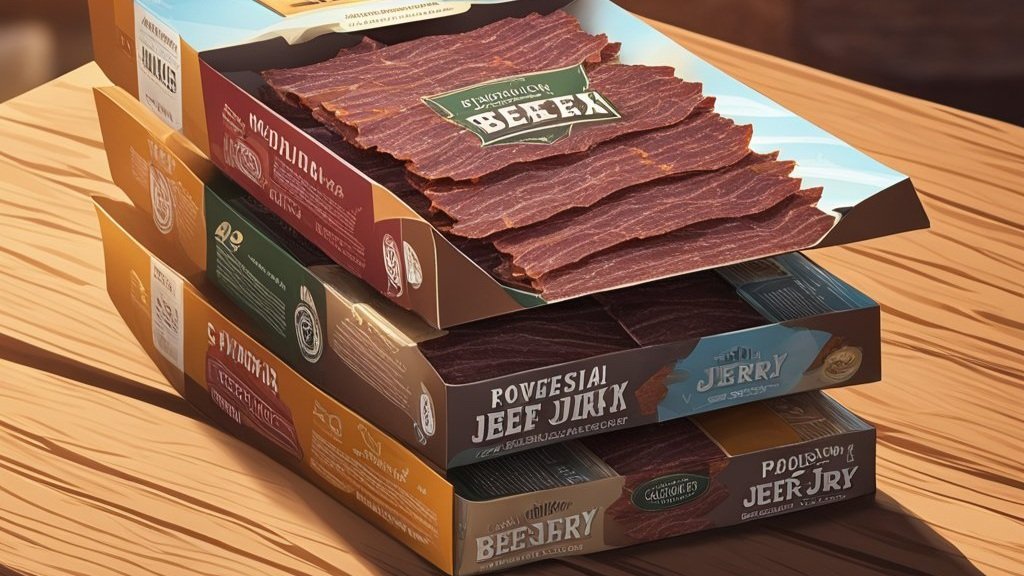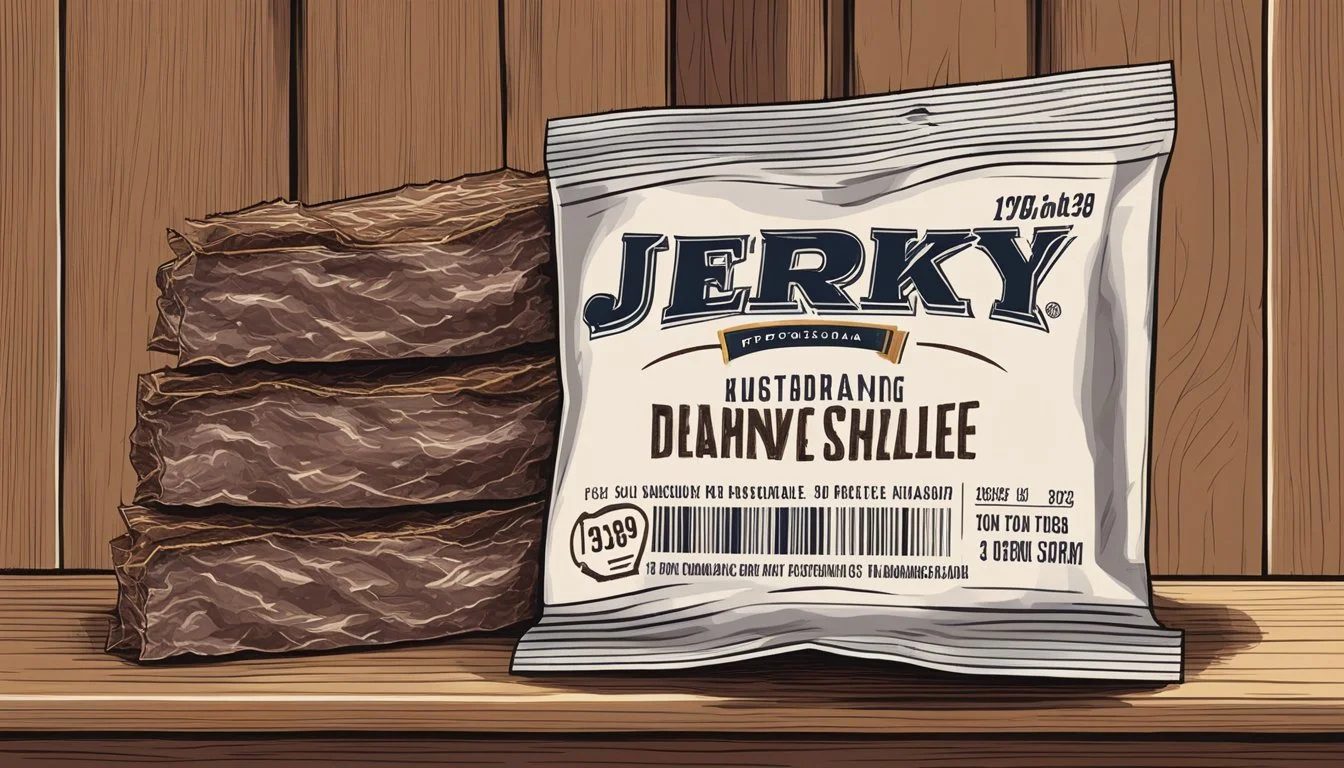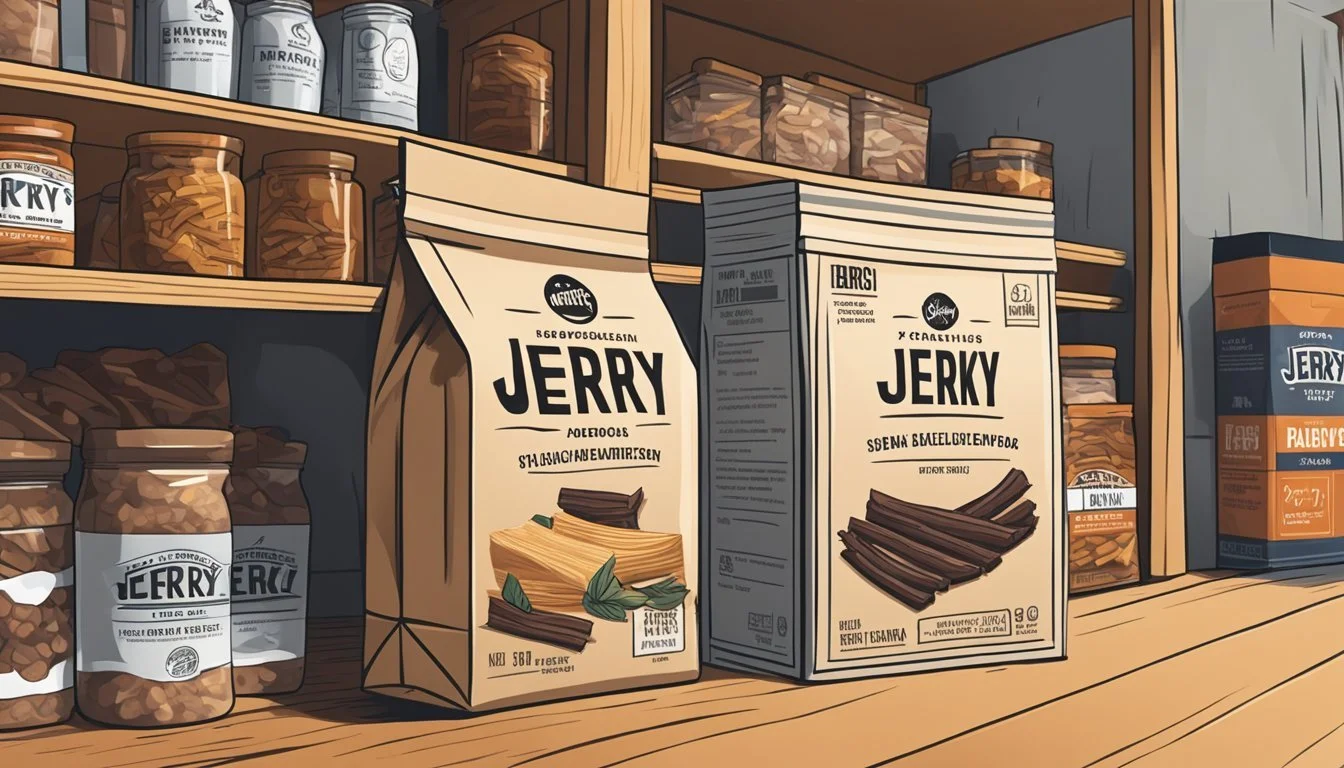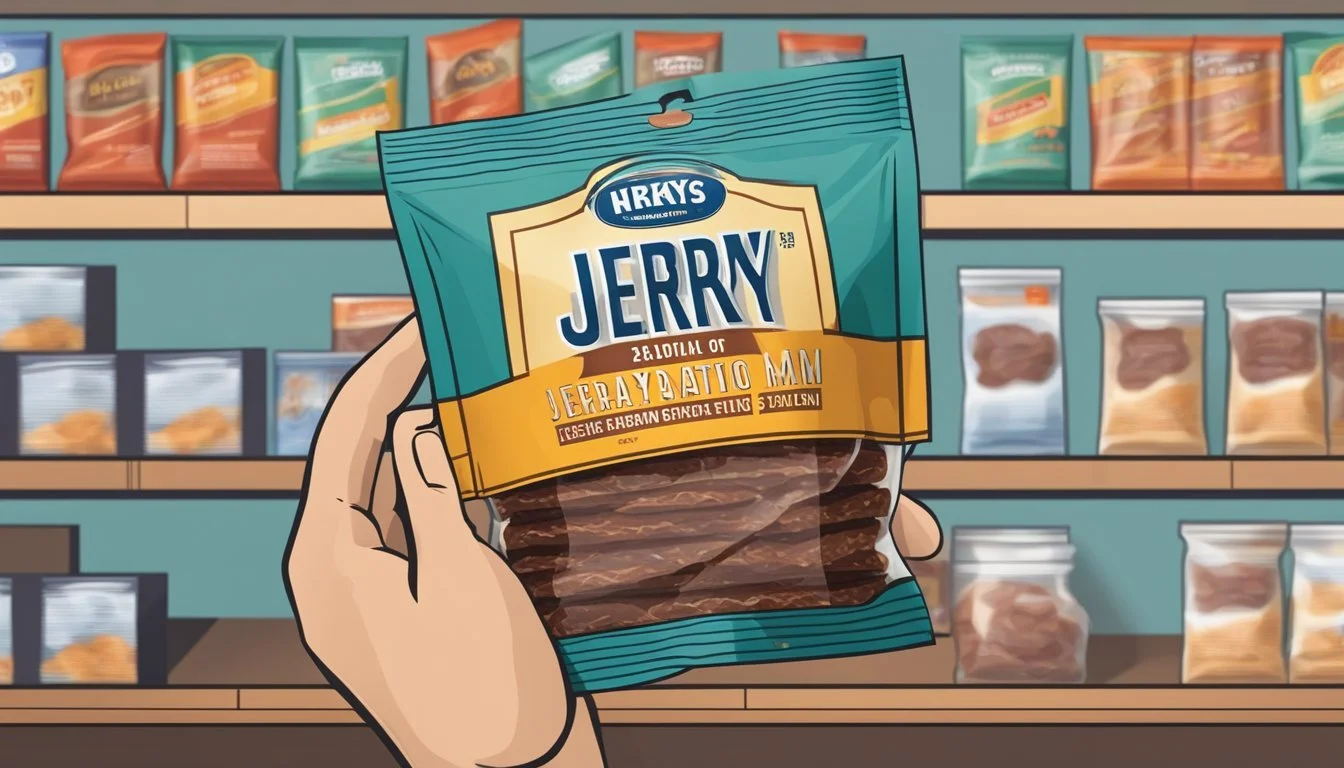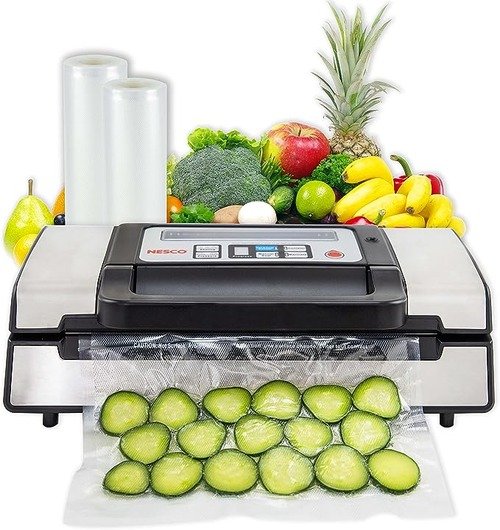How Long Does Jerky Last?
Shelf Life and Storage Tips
Jerky is a high-protein, low-fat snack that has been embraced by many as a nutritious and portable food option. This dehydrated meat, traditionally made from beef (how long does beef last?), is not only rich in protein but also has the advantage of a long shelf life compared to other meat products. The longevity of jerky makes it an excellent choice for those in need of a durable food supply, whether they’re hikers, travelers, or simply looking for a reliable snack to keep in the pantry.
The shelf life of jerky largely depends on the processing methods used, as well as the conditions under which it is stored. Properly cured and dehydrated jerky, when kept in an air-tight and moisture-controlled environment, can last for a considerable time. Store-bought jerky, for instance, can remain edible for several months up to a year due to the preservatives used and the vacuum-sealed packaging. In contrast, homemade jerky, which may lack these industrial processes, typically has a shorter shelf life and is best consumed within a few weeks to months for optimal flavor and safety.
When considering how to extend the shelf life of their jerky, individuals should focus on storage techniques. Keeping jerky in a refrigerator can prolong its freshness, while freezing can extend its edibility even further. However, regardless of the chosen storage method, it is crucial to be vigilant for any signs of spoilage such as off-odors, changes in texture, or visible mold growth, as these indicate that the jerky is no longer safe for consumption.
Understanding Jerky
Jerky is a popular snack known for its long shelf life and nutritional benefits. This section explores its definition, nutritional content, and the method of making.
Definition and Types
Jerky refers to lean meat that has been trimmed of fat, cut into strips, and subjected to a drying process to prevent spoilage. While beef jerky (how long does beef jerky last?) is the most common variety, many other meats such as turkey, bison (What wine goes well with bison?), and venison (What wine goes well with venison?) can also be used. There are two primary categories of jerky:
Homemade beef jerky: Often made with custom cure and marinade recipes and can include a range of spices. The dehydration is typically done using an oven or a dehydrator at home.
Commercial beef jerky: Produced on a larger scale, this type often includes preservatives like sodium nitrate to ensure a consistent product with a longer shelf life.
Nutritional Value
Jerky is high in protein and low in fat, making it a nutritious snack option. An average piece of beef jerky can contain about 10 grams of protein. It is important for consumers to pay attention to the nutritional label, however, as some varieties may be high in sodium due to additives used in the preservation process. Here's a basic nutritional profile for a typical serving of beef jerky:
Nutrient Approximate Value per Serving Protein 10 grams Total Fat 1 gram Carbohydrates 3 grams Sodium 620 milligrams
Making Process
The process of making jerky centers on dehydrating the meat to remove moisture, which inhibits the growth of bacteria. Homemade jerky makers typically slice the meat, season it, and dehydrate it over several hours.
In commercial settings, the process is more standardized to ensure safety and uniformity. Commercial beef jerky usually undergoes a curing phase with large quantities of spices and preservatives before dehydration. This industrial drying process is carefully controlled to meet food safety standards.
Storage Basics
When storing jerky, achieving a balance of temperature, moisture control, and protection from external factors is essential to maximize shelf life and maintain quality.
Ideal Conditions
Jerky's longevity is greatly influenced by the conditions under which it is stored. Optimal storage conditions include a cool, dry place away from direct sunlight and constant temperature fluctuations. Room temperature, ideally between 60°F and 75°F (15°C and 24°C), can be suitable, but cooler environments may extend shelf life. Darkness is a key ally, as light can cause fats within the jerky to oxidize and spoil.
Containers and Packaging
The choice of container significantly affects jerky's shelf life. Airtight containers, such as mason jars or vacuum-sealed bags, are recommended to minimize exposure to moisture and oxygen, both of which can accelerate spoilage. If vacuum sealing is not an option, reusable ziplock bags or resealable bags can suffice, provided as much air as possible is squeezed out before sealing. For those who prefer to avoid plastic, mason jars provide an excellent airtight environment.
Container Type Benefit Considerations Vacuum-sealed bags Minimizes air and moisture contact Not ideal for humid climates Airtight mason jars Durable and completely airtight Bulkier than bags Resealable ziplock Convenient and widely available Must remove air manually.
Discover the ease and cost benefits of purchasing Ziploc bags through online shopping!
Factors Affecting Shelf Life
Several factors determine the shelf life of jerky, including:
Moisture: Dry conditions help prevent mold and bacteria growth.
Heat: Avoid locations that can become warm which would accelerate spoilage.
Oxygen: Oxygen can lead to oxidation, particularly of the fats in the jerky, leading to rancidity.
Light: Direct sunlight or bright interior lights can degrade the quality over time.
Preservatives in commercial jerky tend to extend shelf life compared to homemade varieties, which contain fewer preservatives and thus, benefit more from strict adherence to ideal storage tips.
Shelf Life of Jerky
When it comes to jerky, understanding its shelf life is crucial for maintaining its freshness and safety for consumption. The shelf life can vary depending on storage conditions and whether the package is opened or sealed.
Typical Lifespan
The typical lifespan of commercial beef jerky, when unopened, is approximately one year from the production date. This period can serve as a general guide, but the specific "best-by" date is often printed on the package. Once opened, jerky should ideally be consumed within one week to ensure freshness.
Extending Shelf Life
To extend the life of jerky beyond these time frames, the following storage methods may be employed:
Refrigeration: Storing jerky in the refrigerator can prolong its freshness for 1-2 months past the "best-by" date if it remains unopened.
Freezing: For long-term preservation, freezing jerky is effective. Properly packaged jerky can last for up to 6 months in the freezer without significant loss in quality.
Proper Storage Guidelines:
Keep unopened jerky in a cool, dry place away from direct sunlight.
Once opened, reseal tightly or transfer to an airtight container before refrigerating.
For freezing, wrap jerky in freezer-safe material to prevent freezer burn.
Signs of Spoilage
Jerky is known for its long shelf life due to low moisture content, but it can still spoil. Indicators of spoilage include:
Mold Growth: Visible signs of mold or white spots.
Off Smell: A sour or otherwise unpleasant odor that differs from the jerky's natural smell.
Texture Changes: Jerky becoming unexpectedly soft or exhibiting a sticky surface.
Consuming spoiled jerky poses health risks, so it should be discarded if any signs of spoilage are detected.
Safety and Consumption
Preserving the safety and quality of jerky is crucial, as improper storage or consumption can lead to spoilage and health risks. Understanding how to identify when jerky is no longer safe to eat and the potential health risks associated with spoiled jerky is important for consumers.
Identifying Spoiled Jerky
It's essential for consumers to recognize the signs of spoiled beef jerky to prevent foodborne illnesses. Spoiled jerky may exhibit several changes that can be detected through:
Appearance: Look for any unusual mold or discoloration on the surface of the jerky.
Texture: Fresh jerky should be dry and leathery; if it feels sticky or damp, it may be spoiled.
Smell: A sour or strange odor is a strong indicator that the jerky is unsafe to consume.
One should never rely solely on the expiration date as jerky's safety also depends on how it has been stored.
Health Risks
Consuming spoiled beef jerky can expose a person to harmful bacteria such as Salmonella and E. coli, which can lead to foodborne illnesses. Symptoms of such illnesses include:
Stomach cramps
Nausea
Vomiting
Diarrhea
Upset stomach
These symptoms can range from mild to severe, and in certain cases, require medical attention. To minimize risks, individuals should immediately discard any jerky that shows signs of spoilage and not attempt to taste or sniff it to determine safety.
Storing Different Types of Jerky
When it comes to storing jerky, the method can significantly affect its shelf-life and quality. Different types of jerky require specific storage techniques to maintain freshness and prevent spoilage.
Store-Bought Jerky
Store-bought jerky typically comes with preservatives that extend its shelf-life. Unopened packs can last up to a year when stored in a pantry at a cool and dry place. Once opened, it is best stored in a ziplock bag or an airtight container. If stored in a refrigerator, the jerky should be consumed within two weeks for optimal quality.
Unopened: Up to 1 year in the pantry
Opened: Consume within 2 weeks; refrigerate
Enjoy the convenience of doorstep delivery when you buy beef jerky online!
Homemade Jerky
Homemade beef jerky lacks commercial preservatives, which shortens its storage duration. It is essential to store homemade jerky in a cool, dry place. Vacuum sealing can dramatically increase its shelf-life. If properly stored in a vacuum-sealed bag with an oxygen absorber, it can last for over 12 months.
Vacuum Sealed: Over 12 months
Ziplock or Paper Bag: Consume within 1-2 months for best quality
Beef and Other Meats
The storage of jerky made from beef or other meats, like turkey or bison, relies heavily on proper drying and the ingredients utilized. All types should be kept free from moisture and heat. Ingredients that promote longevity, such as salt, give the jerky a longer shelf-life. Storing in a pantry, in original packaging or an airtight container, helps maintain quality.
Pantry: In original packaging or airtight container
Refrigeration: Recommended once opened to extend freshness
Advanced Storage Techniques
Ensuring the longevity of jerky requires a strategic approach to storage, where controlling moisture and air exposure are critical. The following techniques capitalize on minimizing these factors to extend the shelf life of jerky.
Use of Desiccants
Desiccants are materials that absorb moisture, thereby helping to keep jerky dry and less susceptible to mold growth. Storing jerky with a desiccant bag, typically silica gel, reduces the risk of spoilage by significantly lowering the humidity level within the storage container. It's imperative to ensure that the jerky does not come into direct contact with the desiccant itself.
Get the best value for your money by purchasing food grade desiccant online!
Dry Canning Methods
Dry canning, involving the use of mason jars or dry cans, is a cost-effective technique to preserve jerky. The process involves heating the empty containers at 350 F to eliminate moisture before sealing the jerky inside. An airtight seal is crucial to prevent oxygen from entering and promoting the growth of bacteria.
Save time and effort by ordering mason jars online!
Vacuum Sealing for Longevity
Vacuum sealing is widely recognized for its effectiveness in extending the preservation of foods, including beef jerky, by removing air and creating an airtight environment. This method can extend the shelf life of homemade jerky to 1-2 months and commercial jerky to 12 months or more. Vacuum sealing works best in non-humid climates, as moisture trapped during the sealing process or penetrating over time can compromise the sealed environment.
Discover the endless possibilities of buying a vacuum sealer online!
Jerky in Popular Diets
Jerky, with its high protein content and low-fat profile, fits seamlessly into many popular diets that prioritize lean meats and low carbohydrate intake. It's especially beneficial for individuals adhering to Paleo and Keto diets.
Paleo Dieters often choose jerky as it aligns with the diet’s focus on whole, unprocessed foods. Paleo encourages consuming foods that could have been hunted or gathered, and jerky, which is essentially dried meat, meets this criterion.
High in Protein: Jerky is packed with proteins, crucial for Paleo enthusiasts who require sustenance from animal-based sources.
Low in Fat: Lean cuts of meat are used to make jerky, keeping fat contents minimal.
Keto Dieters find jerky advantageous due to its minimal impact on carbohydrate intake, thereby supporting the state of ketosis.
Macro-friendly: A typical ketogenic diet calls for high-fat, moderate-protein, and low-carb - jerky can contribute to the protein portion without adding carbs.
Convenience: Its shelf-stability makes it an easy, on-the-go snack without deviation from diet requirements.
For those requiring a Gluten-Free option, it’s important to verify ingredients as some jerky might contain additives that include gluten. However, many brands offer gluten-free variants that cater to this need, utilizing tamari (how long does tamari last?) sauce instead of soy or wheat-based products. Always check labeling to ensure compatibility.
In summary, jerky provides a versatile snacking option for several dietary preferences, greatly due to its protein density and low carbohydrate count. As more people seek healthy, convenient snacks, jerky’s popularity in these diets continues to grow.

